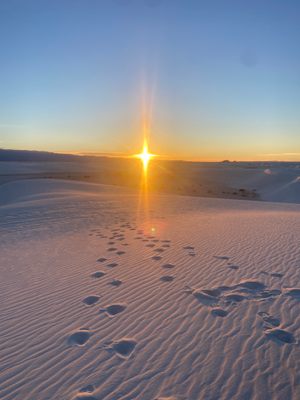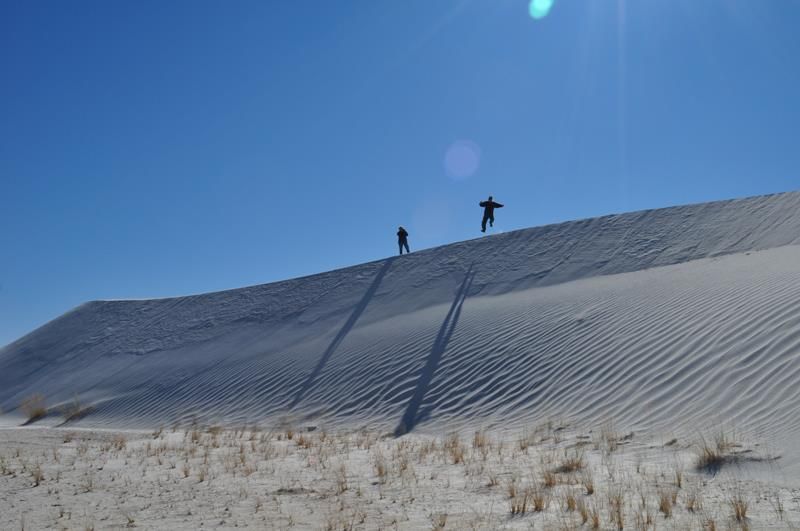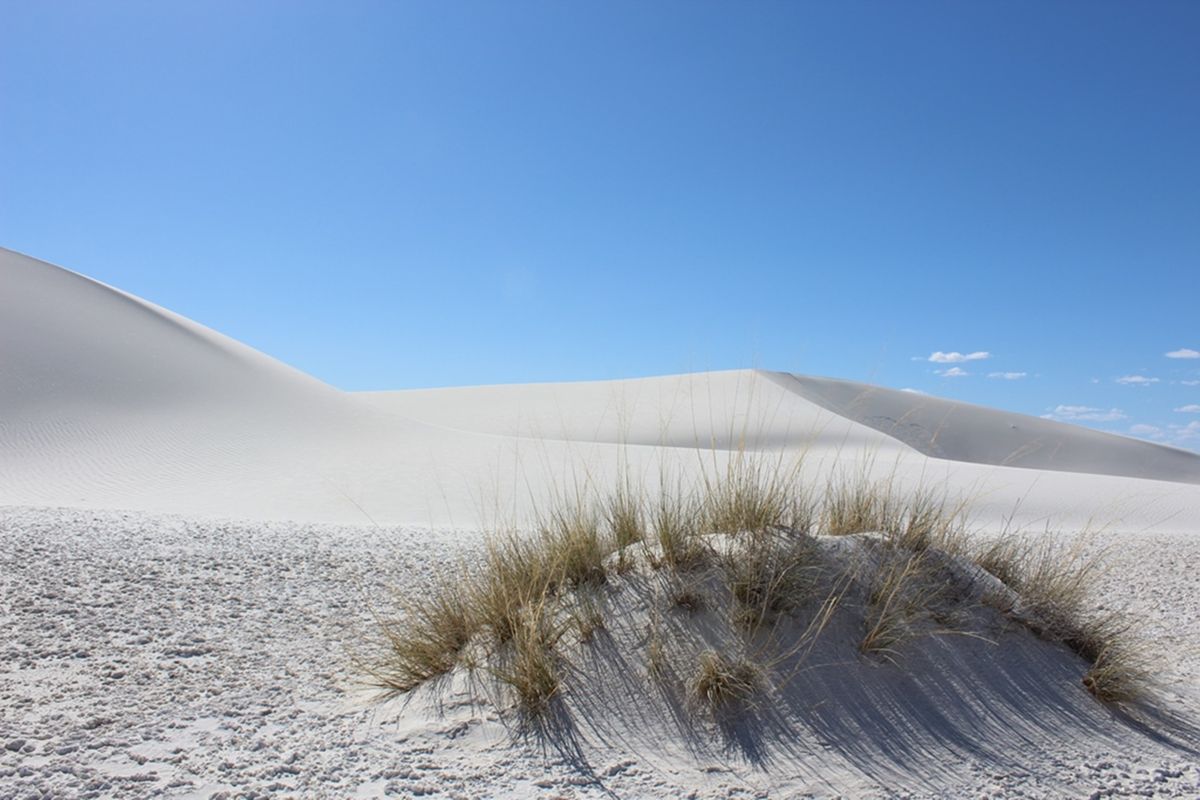About
The wind blown sands and rolling dunes of White Sands National Park blanket an area of 115 square miles in south-central New Mexico. It is the largest pure gypsum dune field in the world. A pure white expanse that has drawn a steady flow of visitors for over 80 years.
Located at the northern limits of the Chihuahuan Desert and at the edge of a US military base and missile-test facility, this U.S. National Park is as obscure as it is beguiling. Visitors can drive to various undulating dunes, take hikes through a nature reserve and even purchase sleds for cruising down the dunes.
Year-in and year-out, the most active dune fields can move in a northeasterly direction at a rate of up to 30 feet per year. These abnormal dunes, formed out of pure gypsum (hydrous calcium sulfate), are borne out of “an ephemeral lake or playa with a very high mineral content,” located in the western section of the park. As the water in the lake evaporates, it leaves behind minerals that form gypsum deposits. These deposits are then transported by wind and form the ever-expanding sea of dunes.
A reserve can be found at the park as well, where a unique array of specially adapted plants and animals are found. Some of the more distinctive species of animals include the Bleached Earless Lizard, the kit fox as well as the non-native but highly adapted African Oryx. An easily navigable path allows for exploration of this unique landscape. The miraculous natural setting is a spectacle to experience and despite the park’s popularity, finding solitude amongst the vast whiteness is remarkably easy.
Related Tags
Know Before You Go
The visitor center is located on U.S. Highway 70, 15 miles (24 km) southwest of Alamogordo and 52 miles east of Las Cruces, New Mexico. Travelers from Carlsbad Caverns to southern Arizona can follow U.S. 82 through the scenic Sacramento Mountains to reach White Sands National Park.
Community Contributors
Added By
Edited By
Published
October 8, 2012




























































































































